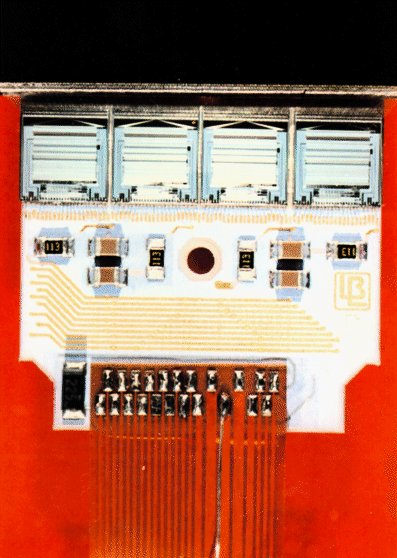
LBL members of the CDF collaboration include 17 physicists, headed by Lina Galtieri.
The new measurement was made possible through the successful exploitation of the Silicon Vertex Detector (SVX). LBL physicists and engineers led the development of innovative integrated circuit design and read-out electronics which enable the SVX to measure tracks of charged particles with very high spatial resolution. There are 500,000 particle collisions per second occurring at the center of the CDF. The SVX is able to accommodate this enormous rate, and as a result CDF is now able to compete with electron-positron machines in measuring the properties of B mesons.
B mesons can be identified because they usually travel several hundred microns before decaying. The SVX allows the tracks to be traced back to their origin with a precision of about 12 microns in the plane transverse to the incoming proton and antiproton. Without the SVX, the resolution was about 300 microns and thus obscured the separation between the collision vertex, where the B meson was produced, and the vertex where it decayed.
In addition to their role in developing the SVX, LBL scientists in the CDF group played a leading role in the data analysis, which produced new measurements of the lifetimes of neutral and charged B mesons and, more recently, has found evidence for the Bs meson, a particle containing a b quark and an s quark. The same group of LBL scientists is also searching for the "t" or "top" quark (the sixth quark), an effort which also exploits the high-precision B vertex measurement provided by the SVX.